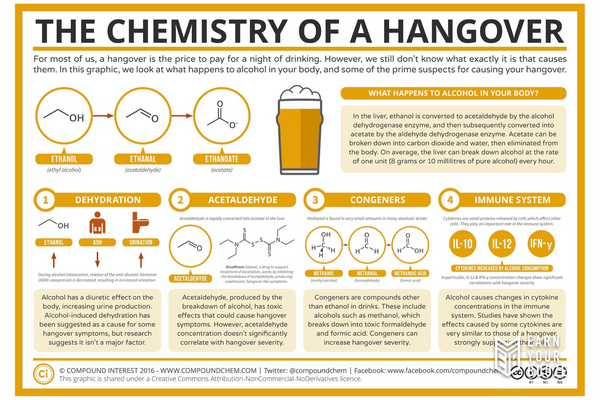Unravel the mystery of getting drunk as we explore the science behind it and the various factors at play. Cheers!
Table of Contents
Have you ever wondered how many beers it takes to get drunk? This question is not as simple as it may seem. The number of drinks needed to reach a state of intoxication can vary widely depending on a variety of factors, including individual tolerance levels, metabolism, and other influencing factors. In this blog post, we’ll delve deep into the science behind alcohol consumption and explore the factors that play a role in determining how drunk you may feel after a few drinks.
Alcohol Metabolism
Alcohol metabolism is a complex process that occurs in the liver. When you consume alcohol, enzymes in the liver work to break down the alcohol into acetaldehyde and then into acetate. These byproducts are eventually converted into carbon dioxide and water, which are excreted from the body. The rate at which this process occurs can vary depending on several factors.
Factors influencing alcohol metabolism include genetics, age, and overall health. Some individuals may have enzymes that work more efficiently at metabolizing alcohol, leading to a faster removal of alcohol from the bloodstream. Younger individuals tend to metabolize alcohol more quickly than older individuals, and overall health can impact the efficiency of alcohol metabolism. It’s important to note that chronic heavy drinking can impair liver function and slow down the metabolism of alcohol.
Individual Tolerance Levels
Individual tolerance levels play a significant role in how many drinks it takes to feel drunk. Tolerance refers to the body’s ability to adapt to the effects of alcohol over time. Factors that influence tolerance levels include genetics, frequency of alcohol consumption, and overall body composition.
For example, individuals who regularly consume alcohol may develop a higher tolerance to its effects compared to those who only drink occasionally. Additionally, factors such as body weight, gender, and overall health can impact how quickly alcohol is absorbed into the bloodstream and how long its effects last.
Factors Influencing Intoxication
There are several factors that can influence how intoxicated a person becomes after consuming alcohol. Gender plays a role, with women generally reaching higher blood alcohol concentrations than men after consuming the same amount of alcohol. This is due to differences in body composition and enzyme activity.

Image courtesy of via Google Images
Body weight also plays a role in how alcohol affects an individual. Generally, a person with a higher body weight will have a lower blood alcohol concentration after consuming the same amount of alcohol compared to someone with a lower body weight. Other factors such as food consumption, hydration levels, and overall health can also impact how alcohol is absorbed and metabolized in the body.
Conclusion
Understanding the science behind getting drunk can help individuals make informed decisions about alcohol consumption and promote responsible drinking habits. While the number of beers it takes to get drunk can vary widely among individuals, it’s important to remember that alcohol affects everyone differently. Knowing your limits, drinking in moderation, and being aware of the factors that influence intoxication can help you enjoy alcohol responsibly and stay safe.
How does alcohol metabolism work in the body?
Alcohol metabolism occurs in the liver, where enzymes break down alcohol into acetaldehyde and then into acetate. These byproducts are eventually converted into carbon dioxide and water, which are excreted from the body.
What factors influence individual tolerance levels to alcohol?
Genetics, frequency of alcohol consumption, body composition, and overall health can impact individual tolerance levels to alcohol. Regular drinkers may develop higher tolerance levels, while factors like body weight and gender also play a role.
Why do women tend to reach higher blood alcohol concentrations than men?
Women generally reach higher blood alcohol concentrations than men after consuming the same amount of alcohol due to differences in body composition and enzyme activity. Women typically have a higher percentage of body fat and lower levels of alcohol metabolizing enzymes.
How can understanding the factors at play help promote responsible drinking habits?
Understanding the science behind getting drunk can help individuals make informed decisions about alcohol consumption. Knowing one’s limits, drinking in moderation, and being aware of the factors that influence intoxication can promote responsible drinking habits and help prevent alcohol-related harm.
Generated by Texta.ai Blog Automation


Leave a Reply